Published
- 03:00 am
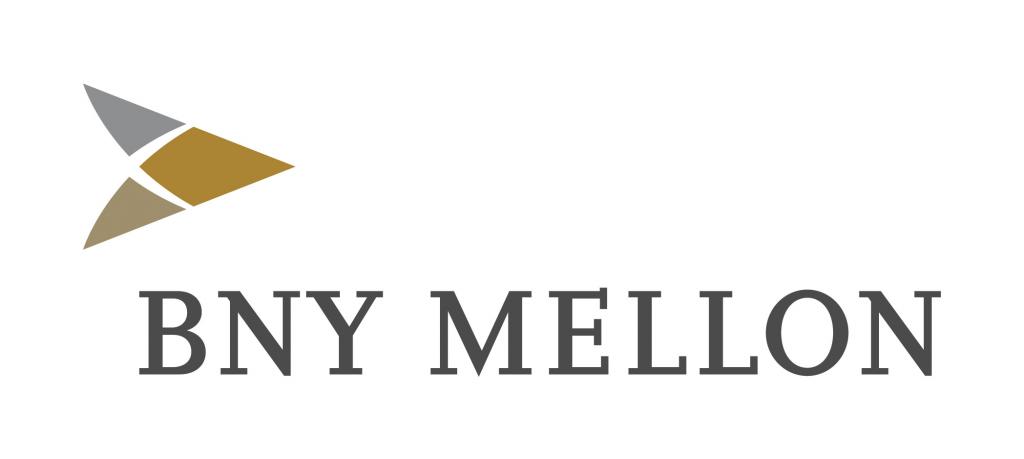
BNY Mellon, a global leader in investment management and investment services, officially opened a new foreign exchange (FX) dealing room in Singapore. The new FX trading desk will focus on primary G10 currencies in addition to Korean Won NDF.
The new dealing room comprises an initial team of nine under the leadership of Keon Ho Kang, who has relocated to Singapore from BNY Mellon's Seoul branch as Head of FX Trading for Singapore. Kang joined BNY Mellon in 2010 from Woori Securities and reports into Richard Gill, Global Co-Head of FX Trading, based in London, and Mark Militello, Head of BNY Mellon's Asia-Pacific Global Markets business, based in Hong Kong. Prior to Woori, Kang spent 12 years with Citibank at their Korean and Singapore offices. The new G10 dealing team joins the company's 30-strong global markets operations team which is based in Singapore.
"Singapore has emerged as a core global financial centre," observes BNY Mellon's Gill. "It therefore makes strategic sense to establish a desk in Singapore, particularly given its growing status as the largest FX trading location in Asia-Pacific."
FX trading in Singapore is one-seventh the size of that in the United Kingdom and less than a third of the United States total. The UK has 41% of the global market, followed by the US with 19%, according to the Bank of International Settlements (BIS), the record-keeper of the world's central banks. Singapore is the world's third largest FX trading centre with 5.7% share, followed by Japan's 5.6% andHong Kong's 4.1%.
BNY Mellon believes Singapore will continue to grow over the next five years. Data from the Monetary Authority of Singapore shows how far Singapore has already come in a very short space of time. The latest available data from BIS (published in February 2014) showed that the city's average daily FX volume increased to US$383 billion as of April 2013, up from $266 billion in the same month in 2010.
"Singapore's rapid ascendancy to become the dominant FX trading hub in Asia-Pacific is not unexpected given its well-placed time-zone and robust financial infrastructure," observes BNY Mellon's Militello. "The increasing importance of Asian currencies and the sharp increase in Chinese renminbi (RMB) trading in particular, is expected to fuel a steady rise in trading volumes in Singapore."
Militello added: "Local incentives from the Monetary Authority of Singapore have seen a recent surge in the number of fund managers domiciled in Singapore, and we expect that to continue to grow. Accordingly, I expect we will continue to see further investment inSingapore by FX providers in respect of new jobs and technology, as it is important and fitting that these services are provided locally."
With foreign exchange sales and trading desks in Hong Kong, Tokyo, Taipei and Shanghai, as well as New York, Boston, Pittsburgh,London and Brussels, BNY Mellon Global Markets has access to more than 100 countries, and is recognised by industry publications as a global leader in FX research and FX technology.
Related News
- 05:00 am
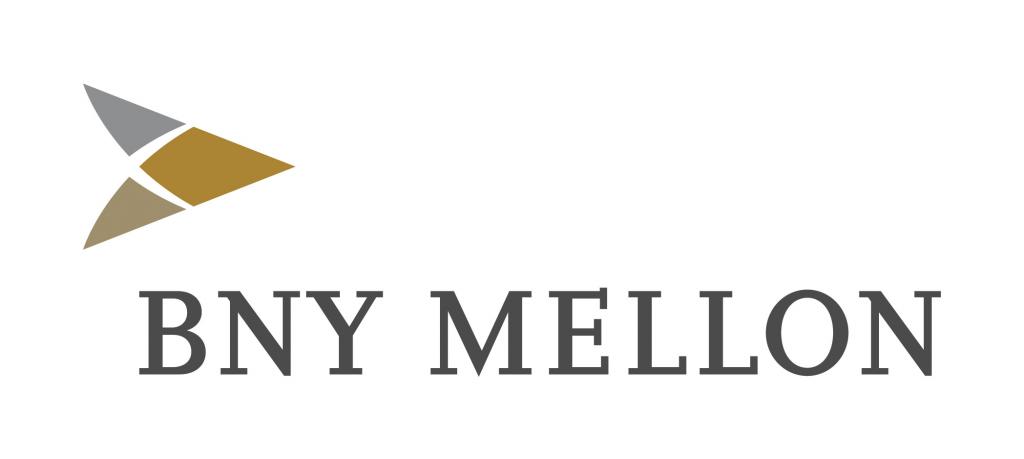
Jim McEleney, chief operating officer for Europe, Middle East and Africa at BNY Mellon, a global leader in investment management and investment services, has been named in a list of the Top 100 LGBT (lesbian, gay, bisexual, and transgender) business role models.
OUTstanding's second annual list of Top LGBT executives has doubled in length in 2014. McEleney was placed at no35 in the OUTstanding in Business list, which recognises LGBT executives who deserve to be acknowledged for their role in the wider campaign to encourage greater diversity within firms and their boardrooms.
Commenting on the methodology for putting together the rankings, Suki Sandhu, OUTstanding's founder, notes that they asked what nominees had done inside and outside the workplace to make it more welcoming to LGBT individuals and looked for information about the candidate's influence within the business as well as recent significant achievements.
"We are exceptionally proud to see Jim recognised for his leadership in championing a positive, diverse and collaborative culture at BNY Mellon," notes BNY Mellon's EMEA Chairman, Michael Cole-Fontayn. "Through showcasing how LGBT executives are already succeeding, hopefully all LGBT leaders will be inspired to aim high and be well supported as they do. Everyone should feel they are in a world where talent can rise to the top."
McEleney has over 27 years of financial services industry experience, including more than 22 years with BNY Mellon or its affiliates, with direct experience across a diverse set of strategic and client-facing roles in asset servicing, asset management and wealth management.
He chairs BNY Mellon's EMEA Diversity & Inclusion Council and represents the region on the Global Diversity & Inclusion Council's Operating Committee. McEleney is the Executive Sponsor in EMEA for the women's employee resource group and as an openly gay senior executive, he is also a member of PRISM, the company's LGBT employee resource group.
McEleney has been the sponsor of BNY Mellon EMEA's annual Diversity and Inclusion Week since its inception in 2012 which celebrates global cultural awareness.
Joanna Symes, BNY Mellon's EMEA Head of Diversity & Inclusion, adds: "Jim works extremely hard to promote inclusion across the company. His involvement in this year's OUTstanding list demonstrates to our employees, future employees, as well as our clients, that diversity continues to be high on our company's agenda. As business leaders, it is our responsibility to create work cultures where our teams believe and feel they can achieve their greatest potential."
Related News
- 09:00 am

BNY Mellon, a global leader in investment management and investment services, has been appointed by Trustco Group Holdings Limited as depositary bank for its sponsored American depositary receipt (ADR) program. Each ADR represents 100 ordinary shares and trades on the OTC Market under the symbol "TSCHY." Trustco's ordinary shares trade on the Johannesburg Stock Exchange under the code "TTO" and on the Namibian Stock Exchange under the code "TUC."
Trustco Group Holdings is a diversified financial services company incorporated in Namibia. The company's operations are organized along three segments: Insurance (long term, short term and mobile insurance); banking (student lending, banking and mortgage financing); and investments (property, education, media and transport). All three segments operate across Namibia, South Africa and other emerging markets.
"We appreciate the opportunity to work closely with BNY Mellon and expand the global presence of our equity through this sponsored program," said Ryan McDougall, group financial director, Trustco Group Holdings. "Our recent bank acquisition and inherent strength as an insurer continue to foster a positive image as a financial leader in Namibia. The ADR will be an exciting new venue for international investors as we continue to pursue expansion into other emerging markets."
"As the first Namibian company to create an ADR program, Trustco is seeking wider access to investors looking to broaden their portfolio into new markets," said Christopher M. Kearns, CEO of BNY Mellon's Depositary Receipts business. "Over the last few years the ADR market has expanded from South Africa to other sub-Saharan countries, and beyond mining into new sectors such as financial services. We've played a major role helping clients in the region tap into global capital markets and look forward to working with Trustco on key outreach initiatives."
BNY Mellon acts as depositary for more than 2,800 American and global depositary receipt programs, acting in partnership with leading companies from over 65 countries. BNY Mellon is committed to helping securities issuers access the world's rapidly evolving financial markets and delivers a comprehensive suite of depositary receipt services.
BNY Mellon is a global investments company dedicated to helping its clients manage and service their financial assets throughout the investment lifecycle. Whether providing financial services for institutions, corporations or individual investors, BNY Mellon delivers informed investment management and investment services in 35 countries and more than 100 markets. As of Sept. 30, 2014, BNY Mellon had $28.3 trillion in assets under custody and/or administration, and $1.6 trillion in assets under management. BNY Mellon can act as a single point of contact for clients looking to create, trade, hold, manage, service, distribute or restructure investments. BNY Mellon is the corporate brand of The Bank of New York Mellon Corporation (NYSE: BK).
Related News
- 07:00 am
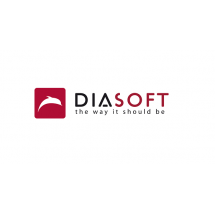
Diasoft, a leading provider of cutting-edge software solutions for financial institutions, announced its company’s ranking in the IDC Financial Insights 2014 FinTech Rankings, an annual international listing of the top vertical technology vendors that derive more than one third of their revenue from this industry as named by IDC Financial Insights.
IDC Financial Insights 2014 FinTech Rankings Top 100 – is the ranking of the top 100 global application/service providers in the financial services market. Financial services includes the banking, capital markets and insurance industries.
The ranking of the top vendors is categorized and evaluated based on calendar year-end revenues and the percentage of revenues exclusively attributed to financial services. Data is gathered from surveys completed by vendors, as well as original research and market analysis conducted by IDC Financial Insights. The FinTech Rankings represents companies that derive at least 33 percent of their revenue from the financial services industry.
The prestigious recognition by IDC Financial Insights reflects Diasoft`s growth from innovative solutions and attests its stability and importance to the industry.
“It is a honor for us to be listed among world`s leading financial industry players”, said Alexander Glazkov, CEO, Diasoft. “The year 2014 was a year of rapid growth for Diasoft, and IDC Financial Insights’ 2014 FinTech Rankings prove company`s leadership in the global financial market. I am confident that our innovative solutions and technological breakthroughs will allow us to further strengthen our position in this sector”.
In 2014 year Diasoft has strengthened its position within global markets through delivery of several projects in the Asian Pacific region. Additionally this year Diasoft has joined the Banking Industry Architecture Network (BIAN) an independent, member-owned, not-for-profit organisation, which, in collaboration with industry participants, aims to define and set the software standards for banking interoperability services. The network focuses on creating a standard semantic banking services landscape. Through membership of BIAN, Diasoft obtained a strong network, through which to exchange information and knowledge and help drive banking innovation and participate in the development of banking technology standards. Diasoft has assessed FLEXTERA to fit BIAN’s approach to building banking architecture and componentisation of the solutions. By results of assessment FLEXTERA turned out to perfectly match to BIAN`s financial services landscape.
“The IDC Financial Insights FinTech Rankings is a critical means by which our institutional clients assess their technology partnerships," said Jerry Silva, Director of Global Banking Research for IDC Financial Insights. "Having a prominent position in the 2014 FinTech Rankings conveys a strong commitment to and significant success in bringing effective technology solutions to the financial services industry."
With a strong commitment and continuous investment into further development of its products and a well-through international strategy, Diasoft successfully improves its financial and business viability, extends its global presence and remains a dynamic leader in a very competitive environment.
Related News
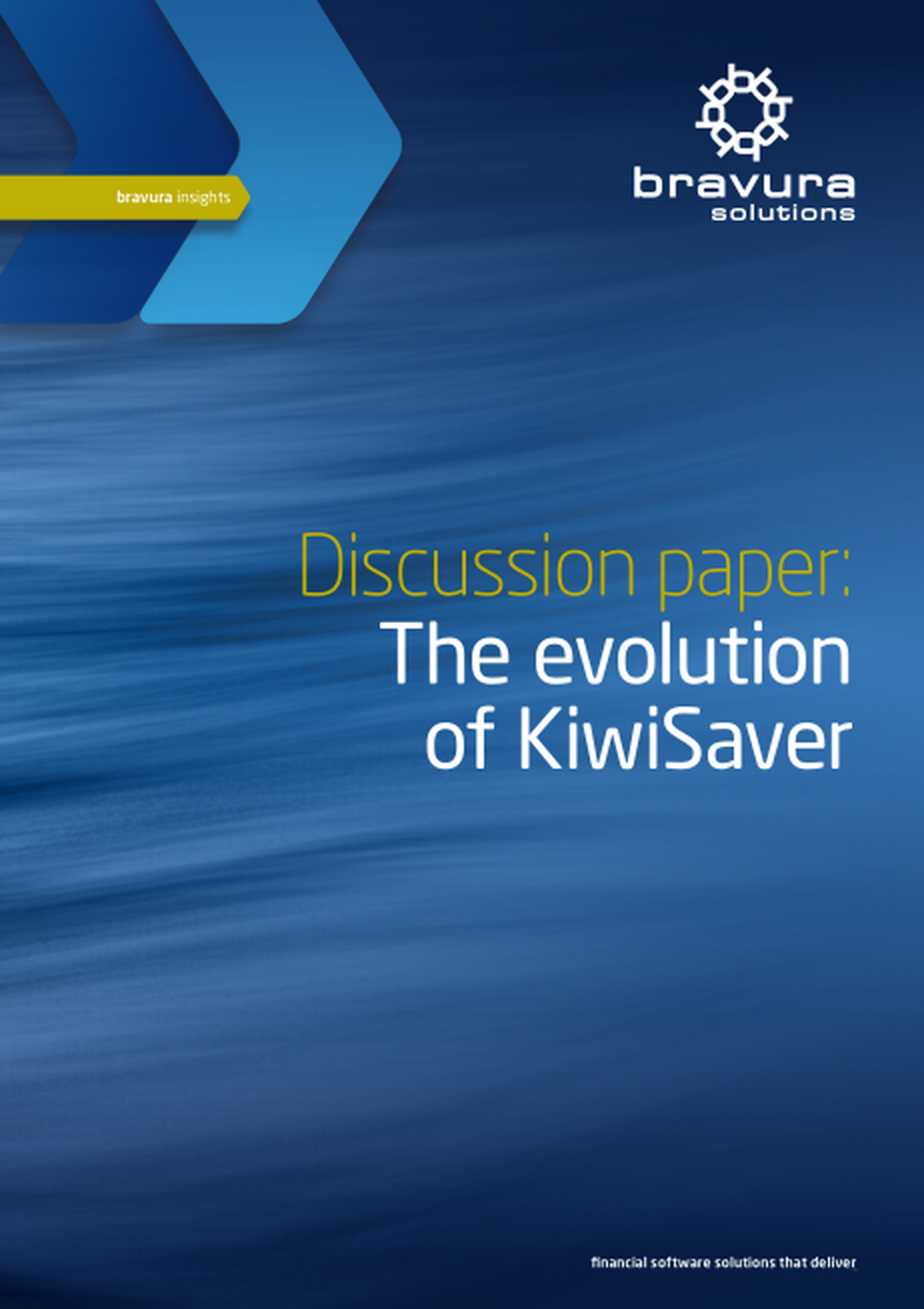
- White Papers
- 24.10.2014 09:58 pm
Our follow up participants – University of Auckland, Financial Services Council, ANZ, ASB and Milford Asset Management – represent a cross section of KiwiSaver stakeholders (i.e. academia, industry bodies, default
providers and other providers). Each coming from a different perspective, they provide some interesting insights into the evolution of KiwiSaver.
Default arrangements
Two years after the original KiwiSaver round table, there continued to be a range of views about the default arrangements. University of Auckland Co-Director Retirement Policy & Research Centre, Michael Littlewood, maintained his opposition to the government appointing a select number of default providers, asserting that the field should have been extended to all providers that meet certain minimum standards. He accepted that, if the current auto-enrolment arrangements continue then
there must be default schemes, each with its own default investment strategy.
Financial Services Council (FSC) Chief Executive, Peter Neilson said the FSC continued to broadly support the default arrangements, but had specific ideas about how they should be improved. “The default investment strategy is particularly important, because the people who are least confident to make active decisions about their investments are often more likely to be female, more likely to be over 45 years, more likely to be relatively poor in terms of household income and are also more likely to be risk averse. We need a default investment strategy that best protects their interests.”
Not surprisingly, the two default providers in our follow up – ANZ and ASB – were in favour of the default arrangements. ANZ General Manager, Wealth Products & Marketing, Ana-Marie Lockyer 2 held the view that the default provider arrangement served as a parking spot, particularly for those members who were auto-enrolled and not – at least initially – making an active choice. “For members assigned under the default arrangements, there is a level of comfort that there is some very thorough due diligence surrounding the appointment of the default providers,” she said.
Similarly, ASB Head of Wealth Product, Roger Clayton, said his company remained supportive of preserving the objectives of the default arrangements as a parking space, while members familiarise themselves with KiwiSaver and become comfortable with making their own investment choices. Milford Asset Management, a non-default KiwiSaver provider, was equally comfortable with the default
arrangements.
Communication and education
There was broad agreement among our follow up participants that communication and education remained the key to realising the original intention of the default arrangements. While they felt that member
communication had increased and improved over the two-year period since September 2012, most considered there was still more work to be done in this area.
A recent FSC survey reveals why communication and education remain such salient issues. The survey found that in 2013, 55 per cent of the KiwiSaver population either did not know or were not sure which type of investment fund they were in. 3 FSC’s Peter Neilson stressed that member communication from all providers – default or otherwise –
needs to get the basics right.
“If you don’t know what type of fund you are in – whether conservative, balanced or growth – how can you have a conversation about whether this is the most appropriate long-term strategy for you personally. So
certainly, there is still huge potential for improvement.”
The new default provider scheme sought to address this communication deficit by introducing a requirement that default providers offer investor education to encourage their members to make an active choice about which fund they are in.
Milford Asset Management Managing Director, Anthony Quirk, felt the requirement was well intentioned, yet he queried its efficacy, given that member education may prompt members to leave their default provider.
“There seems to be a conflict of interest,” said Mr Quirk. “Default providers are being asked to provide education for people to make an active choice, but they actually have an incentive to keep their clients within their scheme. As a result, members may be encouraged to
choose a fund which may not be best for them.” University of Auckland’s Michael Littlewood similarly expressed doubt about the investor education requirement, stating he did not expect it would lead
members to be engaged to any greater extent.
Several follow up participants also spoke about the challenge of engaging investors, who by virtue of their allocation to a default provider, may have a limited interest in making an active choice.
However, FSC’s Peter Neilson felt the investor education requirement provided an incentive for default providers to genuinely engage with their members. “Firstly, there is no guarantee that any of these
providers will be renewed at the end of the seven year period if they don’t meet this obligation. Secondly, as people’s balances increase over time, they will become more engaged and default providers will increasingly need to convince members why they shouldn’t switch to
another fund.”
As a default provider, ANZ’s Ana-Marie Lockyer said investor education was not something new to her company and that they had been working on improving their communications with their members for some time.
“At ANZ, we believe investor education is hugely important, however, we like to frame it more as financial well-being rather than financial literacy. It’s about ensuring our members are better positioned to
understand the benefits around planning, goal setting and budgeting for their future needs.”
Mrs Lockyer said while ANZ had spent considerable time and effort developing websites and ‘plain Englishing’ its customer correspondence, it aimed to do more.
“The recent Inland Revenue conference revealed that only 59 per cent of New Zealanders eligible for KiwiSaver member tax credits had actually claimed them this year. Clearly, there is still a lot of work to do to help people understand KiwiSaver and maximise the benefits.”
Online and mobile service delivery
At the 2012 round table, several participants spoke of the need for funds to provide online and mobile service delivery of KiwiSaver, as a means of better engaging their members. While some providers have taken steps in this direction, it would appear the industry as a whole has some way to go.
According to ASB’s Roger Clayton, technology is the key to better engaging with members and empowering them to make more informed decisions. He cited easy online access, online fund switching, online account transfers, mobile apps and social media, including blogs and YouTube clips as valuable tools available to enhance investor education. “ASB is a firm believer of using digital platforms to increase member engagement. We recently launched KiwiSaver on our banking platform and also our mobile app. We continue to receive a swathe of unprompted delight from our customers on this functionality.” ANZ’s Ana-Marie Lockyer said digital communication was paramount going forward because it enables members to access their information, any time and any place.
She said in recent years ANZ has made a considerable investment in websites, case studies, calculators and other online tools that helped people to easily understand their investment and bring it to life. She
added there would be more to come.
“Our members can also view their ANZ KiwiSaver balances from their mobile devices, using ANZ’s mobile app.”
FSC’s Peter Neilson agreed that the trend towards online and mobile delivery was important and that the industry was committed to doing more in this area.
“Online and mobile service delivery are helpful in explaining the story. They make it easier for people to gain access to their current balance to see it grow. People are often pleasantly surprised when they find out they have more than $10,000 in an account, and this helps to engage them.”
Among the providers in our follow up, there was agreement that while the initial set up costs for communicating with members via digital means were high, these measures would ultimately drive provider
costs down.
Portfolio structure
At the 2012 round table, some participants questioned the default provider arrangements adopting a conservative investment approach for members who do not make a specific investment choice. The new default arrangements continue this approach, which includes a 15 to 25 per cent allocation to growth assets.
There was a diversity of views among the follow up participants about this conservative portfolio structure. Peter Neilson said the FSC had considerable reservations about this approach.
“If you ask most politicians which structure they would recommend for their kids, they would go for a growth or a balanced structure. Yet they don’t wish to take on the responsibility of that decision for the typical investor,”said Mr Neilson.
“At FSC, we have done some work suggesting that the use of guarantees would be a cost effective solution. In this scenario, members would pay a guarantee in order to protect them against the worst outcomes in the worst years. So you might pay $3,000, but you ultimately earn an additional $170,000 over the life of the fund. Most people would say ‘Yes, that’s a no brainer’.”
University of Auckland’s Michael Littlewood maintained his view that the investment strategy within the default scheme arrangements should not be set by the government. He felt each default provider should develop its own default investment strategy, just as non-default providers do at present.
“The government knows nothing about investment strategy and shouldn’t pretend otherwise,” said Mr Littlewood.
In contrast, ASB’s Roger Clayton felt the current portfolio structure was appropriate and had been proven to be effective. He said members should be engaged and encouraged to regularly review their risk profile
and should also be provided with online fund switching tools to enable them to change their portfolio structure according to their needs. ANZ’s Ana-Marie Lockyer noted effective investor education was particularly important considering all members entering default schemes were allocated to conservative funds.
“If investor education is working well, then the question of the default conservative portfolio structure ceases to become an issue, because members can make their own active choice about whether or not that’s the best place for them to be.”
“While we would like all members to be actively engaged with their KiwiSaver, the reality is that many people forget about it.” ANZ believes a lifetime approach – which automatically moves members’ money to funds with different risk profiles, based on their ages – would still be a more suitable default option. This approach would ensure members were invested in a fund with levels of risk and expected returns considered appropriate for an average person of that age. In 2012, ANZ calculated the difference between the lifetime and default conservative setting to be $72,000 of an individual’s retirement savings, pointing to historical analysis that growth assets outperform defensive low risk assets over the long term.
Milford Asset Management’s Anthony Quirk said he thought the current portfolio structure was ‘very conservative’ and he also suggested a life stages model might be more effective in meeting members’ changing
needs.
Key challenges
When asked about the key challenges currently facing KiwiSaver providers, a number of themes emerged. Economies of scale have become increasingly important as providers seek to keep their costs down. According to FSC’s Peter Neilson, mergers will be inevitable as the industry becomes increasingly competitive.
“It’s unlikely we can continue with 45 plus schemes all being competitive and all being successful. It’s clear that a number of providers will decide that funds management is not their long-term best business.”
In this environment, KiwiSaver providers are turning to technology solutions to help them achieve operational efficiencies and streamline costs.
ANZ’s Ana-Marie Lockyer believes that continued investment in capability and capacity of their registry system is fundamental to meeting the current and future service delivery expectations and needs
of KiwiSaver members and remaining relevant and competitive in the marketplace.
ASB similarly employed technology to improve their process and operating systems and drive costs down.
Future trends
When asked about future trends for the New Zealand superannuation landscape, the follow up participants held a range of views.
University of Auckland’s Michael Littlewood expected that KiwiSaver would ultimately replace all other forms of occupational superannuation and that employers would increasingly have no direct interest or involvement in retirement saving issues.
ANZ’s Ana-Marie Lockyer also felt there would be a continued rationalisation of the older, stand-alone employer superannuation schemes.
“Changes in legislation are making it more onerous to continue these schemes and they simply are not as easy to manage as KiwiSaver, so it’s a natural progression,” said Mrs Lockyer.
FSC’s Peter Neilson predicted that – with a change of government – KiwiSaver would become compulsory and contribution rates would increase.
“It’s also likely that, sometime in the future, KiwiSaver will be increasingly bundled with other financial products such as income protection and life insurance, as is common in Australian workplace based schemes. There’s also a fair prospect that the over taxation of superannuation funds will be addressed within the next three years.”
ASB’s Roger Clayton felt that online self-service tools would be a key trend in the future. “There is a large and increasing cohort of KiwiSaver
members who are hungry for online tools that enable them to manage their own accounts and control how their provider interacts with them. There is no doubt that members see real benefits of ease and convenience of having their KiwiSaver account consolidated with their
online banking platform.”
Milford Asset Management’s Anthony Quirk said in the years ahead he expected members to become more aware and engaged as their balances grow and they see the impact of fund performance. He thought the industry should focus on developing appropriate investment products for when people reach retirement, so they can enjoy a tax-efficient income stream in that life phase, rather than spending their nest egg as soon as it becomes available.
ANZ’s Ana-Marie Lockyer felt that as KiwiSaver balances continue to increase, there is likely to be a cascade effect as people start to get into the savings habit.
“Once people start to see their balances grow, they may well seek out other investment opportunities that enable them to save on a regular basis, but are not locked in until retirement. Also, providing a spectrum
of advice options and access for members will be increasingly important.”
KiwiSaver – success or failure?
With one exception, our follow up participants felt KiwiSaver represented a step in the right direction for New Zealanders in terms of retirement savings.
While the University of Auckland’s Michael Littlewood continued to regard KiwiSaver as ‘a solution looking for a problem to solve’, he would not recommend its abolition due to the substantial taxpayer investment – more than NZ$5 billion – in its creation. He felt there was
no evidence to suggest that KiwiSaver had increased households’ financial savings.
In contrast, ANZ’s Ana-Marie Lockyer believes KiwiSaver has served as catalyst, helping raise awareness of the importance of retirement savings among New Zealanders and helping them to plan and contribute to their retirement savings.
“If you asked people seven years ago, where KiwiSaver would be today, I don’t think anyone would have predicted the current membership or the funds under management, so it’s been extremely successful. It will,
and should continue to evolve, but I believe it’s pretty well set in foundation now for New Zealand as a core part of retirement savings. Now it is up to the industry to ensure members know how to use it to save for better retirement outcomes.”
ASB’s Roger Clayton agrees, stating that KiwiSaver has made a huge difference with respect to retirement savings, particular among younger New Zealanders. For FSC’s Peter Neilson, the success of KiwiSaver is unequivocal.
New Zealanders have voted with their feet. There are now more than 2.3 million people who have signed up and there are only a few people who remain opposed to it. It’s too popular to kill on a political basis and it is
convenient enough that people like it. It’s not perfect by any means, but it has been the most successful financial innovation in New Zealand in the last 100 years, since the development of the savings bank.”
Please fill up these fields in order to read the publication.
Other White Papers
- 03:00 am

BNY Mellon Wealth Management has received regulatory approval inHong Kong to launch comprehensive discretionary investment and wealth management services to high net worth individual investors.
BNY Mellon Wealth Management will bring a wide range of solutions-based services including strategic asset allocation, access to world-class investment management services provided by the corporation's robust multi-boutique structure, and active, personalized client discretionary portfolio management.
BNY Mellon is one of the largest wealth managers in the world with more than U.S. $187 billion in private client assets, as of September 30, 2014. BNY Mellon was created by the 2007 merger of the 138-year-old Mellon Financial and the Bank of New York, which was founded in 1784 and is the oldest trust bank in the U.S. It has served clients in Asia for nearly a century.
The launch signifies a marked expansion of BNY Mellon's Asia-Pacific wealth management presence serving Asian families as well as U.S. citizens. Unlike typical money management services that are more transactional in approach, BNY Mellon differentiates itself by taking a longer and broader view of serving clients' overall wealth and investment planning needs.
"Our expansion provides greater access to comprehensive wealth and investment planning services to the high-net worth market," said Larry Hughes, chief executive officer of BNY Mellon Wealth Management. "With the broad and deep capabilities of one of the world's leading investments companies, BNY Mellon offers holistic, solutions-based wealth management. Our focus on discretionary investment management, rather than transactional services, is integral to our comprehensive approach and differentiates us in the market."
"We continue to make significant investments in both our core businesses of investment management and investment services in Asia-Pacific," said Alan Harden, CEO of BNY Mellon Investment Management in Asia-Pacific. "Expanding on-the-ground wealth management services is a prime example of this long term commitment to the region. The Bank of New York Mellon is leveraging the trend of unprecedented wealth growth rates in the Asia-Pacific region by drawing from our broad global expertise to deliver wealth and investment planning solutions locally."
The Bank of New York Mellon is a wholly-owned subsidiary of The Bank of New York Mellon Corporation ("BNY Mellon" and NYSE symbol: BK).
*Through the legal entity of The Bank of New York Mellon, Hong Kong Branch.
Related News
- 09:00 am

Lombard Risk Management plc, a leading provider of integrated collateral management, regulatory compliance and reporting solutions for the financial services industry, sponsored the 8th annual collateral management forum, organised by Fleming Europe between 15-17th October in Amsterdam, where around 150 collateral business practitioners gathered to discuss key topical issues: regulation and optimisation included.
Elaine MacAllan, Head of Functional Development, COLLINE, sat on the Focused Panel Discussion on the 2nd day which was hosted by Chris Hunt, previously Global Head of Counterparty and Market Risk Operations at UBS. The panel discussed: Keeping up with higher standards for technology, processes and integrations; Margin optimisation, a function of collateral optimisation; Advanced risk management, activity monitoring and computation of intra-day margins on a real-time basis; and Finding the optimal strategy to comply with different regional legal requirements.
Elaine kicked off the panel discussion by highlighting the difficulty many institutions have in sourcing data of good quality. This is becoming increasingly important as we move towards real time single platforms where multiple data feeds are required in order for organisations to have access to an holistic view of their inventory and exposures. Providers also face challenges in developing solutions to meet regulatory issues when the regulators take a long time to finalise the detail, but the deadlines remain the same.
Elaine said: “Our team of collateral business matter experts are constantly monitoring the regulatory demands, and we work closely with our clients to incorporate relevant functionality to enable them to meet the regulatory requirements, but new features, however straight-forward, need specifying, developing and thorough testing before we can release them, and our clients also need to carry out testing. We therefore work towards the proposed deadlines, even though we appreciate that these may be delayed.”
Helen Nicol, Product Director, COLLINE, demonstrated the latest version of COLLINE (V13), which was released just last week and includes the following functionality:
- Regulatory Enhancements - supporting clients in meeting their IOSCO and Basel III regulatory commitments.
- User-definable Optimisation Rule Builder - used to create and combine optimisation rules for flexible scenario analysis and optimum allocation of collateral.
- Configurable Inventory Manager - providing real-time scenario analysis across financial products and business lines in order to best manage collateral inventory on a firm-wide basis.
- Enhanced Collateral Substitution Workflow - automating complex, time-consuming manual processes related to substitutions enabling managers to deal with high volumes more efficiently.
Finally, a special congratulations to Ms Elena Chaykovskaya, Head of the Financial Market Development Department at Central Bnk of the Russian Federation, who won the prize draw and a bottle of Dom Perignon vintage champagne.
Related News
- 06:00 am
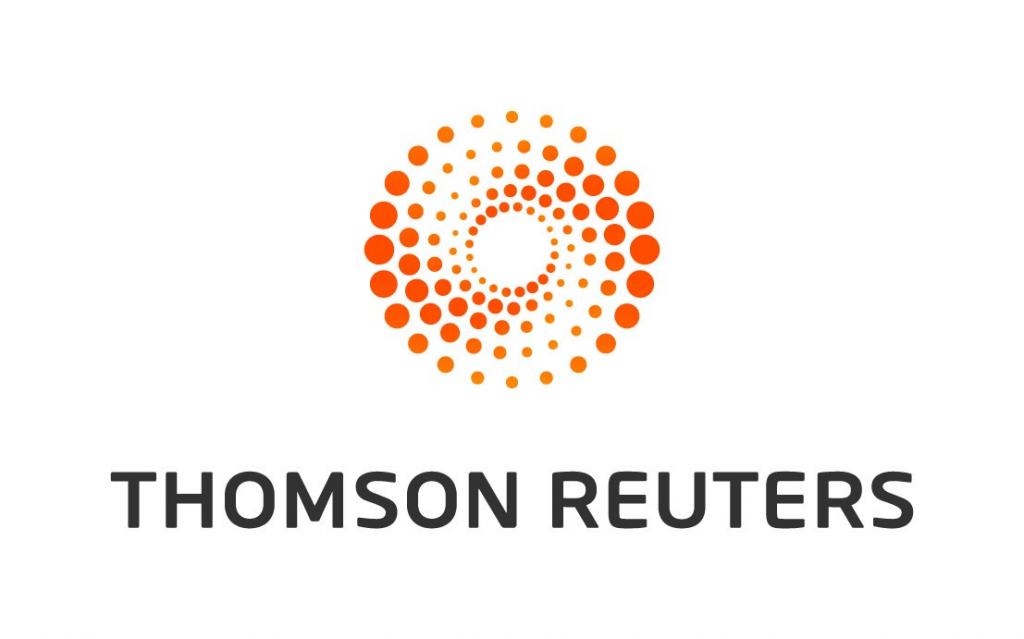
Thomson Reuters, the world’s leading source of intelligent information for businesses and professionals, has announced that Tradeweb Europe, an affiliate of Thomson Reuters and a leading provider of electronic fixed income and derivatives marketplaces, has selected Thomson Reuters Accelus Org ID (Accelus Org ID) to complement its existing Know Your Customer (KYC) due diligence.
“We have very strong customer due diligence processes in place and have expanded the resources available to our business by leveraging the service offered by Accelus Org ID,” said Simon Maisey, managing director, finance and business management at Tradeweb. “Accelus Org ID will support this effort by advising on client changes and performing required updates screening on our clients. We view Accelus Org ID as a great enhancement to our ongoing monitoring, and this service will ensure that our KYC information remains current and accurate.”
Earlier this year, Thomson Reuters launched Accelus Org ID, an end-to-end client identity service that collects, verifies, screens, determines ultimate beneficial owners, and monitors a legal entity for change. The managed service is used for client on-boarding, conducting remediations and refreshing existing portfolios to a global standard. The service enables the end-client to provide identity information through a secure web-based portal and authorize the distribution to their financial institutions. Accelus Org ID provides a real-time "KYC passport" which represents a validated and screened identity, whereby simplifying the account opening process needed to conduct business globally.
“We are extremely pleased to be working with Tradeweb to help ease the burden of the increasingly rigorous KYC demands,” says Anna Mazzone, head of KYC Managed Services at Thomson Reuters. “Our independent and live solution will make a significant difference in enhancing the KYC due-diligence process. Working with Tradeweb is a true testament to our continued dedication to transform the way the industry approaches KYC due diligence with an innovative, secure and efficient solution.”
Thomson Reuters and Accelus Org ID recently won ‘Best KYC and Client On-Boarding Solution’ at the second annual Data Management Summit Awards 2014, hosted by A-Team Group. The annual Data Management Summit Awards recognize outstanding products and services in data management and are voted on by senior managers from financial institutions and readers of Reference Data Review.
Accelus Org ID is secure and easily integrates with financial institutions’ existing internal systems. The service is centrally updated as new regulations come into effect and covers rules and regulations surrounding AML, FATCA, Dodd-Frank, EMIR and MiFID, supporting KYC compliance in the global capital markets.
Related News
- 04:00 am
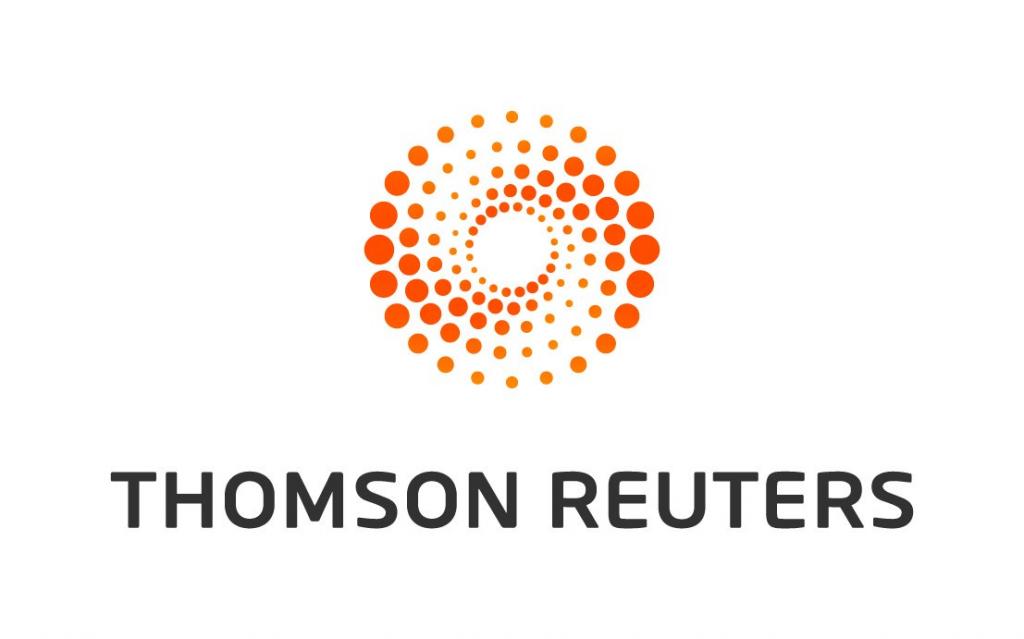
Thomson Reuters has updated its patented, award-winning PPC's SMART Practice Aids Audit Suite to provide customers with a focused, integrated, and efficient internal control evaluation tool that is fully compliant with COSO's new Internal Control Framework.
PPC's SMART Practice Aids—Internal Control follows the new COSO Framework as it guides auditors through a risk-based and time-saving evaluation of their clients' internal controls over financial reporting.
The new COSO framework supersedes the original framework effective December 14, 2014 and has received significant attention from both the accounting profession and regulators. Since the original COSO Framework was introduced in 1992, there have been dramatic changes in business and operating environments, making businesses more complex, technologically driven, and global. The new COSO Framework reflects those changes and enhances and clarifies a number of concepts to make it easier to use and apply.
"The COSO Framework satisfies SEC and AICPA requirements to use a suitable, recognized framework for designing and evaluating internal control. It is the most widely recognized framework in the U.S. today," said Steve Lindsey, Director, Product Development - Audit and Accounting, with the Tax & Accounting business of Thomson Reuters. "With its patented top-down, risk-based approach, PPC's SMART Practice Aids—Internal Control provides auditors with an effective and efficient tool for evaluating internal controls over financial reporting consistent with the new COSO Framework."
PPC's SMART Practice Aids—Internal Control is part of the widely-used SMART Audit Suite. It is fully integrated with PPC's SMART Practice Aids—Risk Assessment to optimize the audit planning process and drive efficiency, while also helping firms ensure full compliance with complex professional standards and regulatory requirements. PPC's SMART Practice Aids—Internal Control is part of the Thomson Reuters Checkpoint Tools line.
Related News
- 07:00 am

SunGard has released the results of a survey on actuarial risk modeling in North America, which highlights increased demand among insurance carriers for sophisticated solutions as traditional spreadsheet models lack the rigor and governance required by today’s actuarial practices.
The survey asked 40 North American life and non-life insurers to provide feedback on the key business drivers leading to change in how they make technology decisions. Respondents included actuaries, actuary department heads, chief risk officers and other senior executives.
Key findings of the report include the following:
· 46 percent said the chief actuary either makes the final decision or leads a selection committee to acquire actuarial modeling technology
· More than 70 percent of respondents indicated that they would benefit from a single platform for both valuations and projections
· 40 percent indicated they are using spreadsheets or internally developed systems to perform financial projections, and 31 percent are using them to perform valuations
· 21 percent said they plan to enhance their actuarial modeling capabilities within the next 12 to 24 months
“Only half of U.S. insurers use formal modeling controls and over one third manually source data. Actuarial risk modeling is often done on spreadsheets, which has become more complicated over time with minimal documentation and automation, and a high degree of customization. With today’s evolving risk landscape, more interconnected and volatile financial markets, and tighter regulation, insurers have an opportunity to leverage configurable actuarial systems that can manage financial risk while minimizing operational risk.” – CEB TowerGroup research director Sam Stuckal
“The traditional role of the actuary is changing from that of a number-cruncher to a trusted advisor and contributor to strategic decision making. This role change is in a perfect storm with regulatory pressures, causing insurers to place greater emphasis on data and process governance, risk transparency and compliance, and improving the speed, accuracy and efficiency of their actuarial modeling tools. By centralizing data, models and workflows, leveraging business intelligence, and adopting cloud-based solutions, insurance carriers in North America can better position themselves for profitability and growth.” – Bill Diaz, president of SunGard’s insurance business









